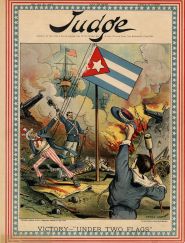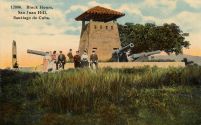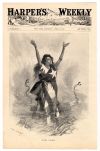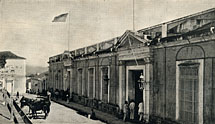Struggle for Independence
The following images tell the story of a brief but significant period of time in Cuba's history. In 1898, Cuba, Spain, and the United States went to war over Cuba's right to gain independence from Spain. The combination of rising nationalistic feelings in Cuba, together with overall disaffection with Spanish colonial rule and increasing U.S. investment and interest in Cuba laid the groundwork for the Spanish-American War.
Spain's repressive measures to control Cuban uprisings in the island were graphically portrayed in sensational newspaper and magazine accounts across the United States. Furthermore, the unexplained sinking in Havana's harbor of the battleship USS Maine on February 15, 1898, which had been deployed to protect U.S. citizens and property in the aftermath of rioting in Havana, sealed the U.S. public's resolve for intervention. The U.S. Congress issued the joint resolution that declared Cuba's right to independence, demanded the withdrawal of Spain's armed forces from the island, and authorized the use force by American troops to secure that withdrawal while renouncing any U.S. design for annexing Cuba.
Spain declared war on the United States in April 1898 and the U.S. reacted in kind by issuing a declaration of war against Spain. The Spanish-American War broke out, but the Spanish fleet suffered heavy losses and the city of Santiago surrendered to General William Shafter, thus bringing to an end 400 years of Spanish rule.










